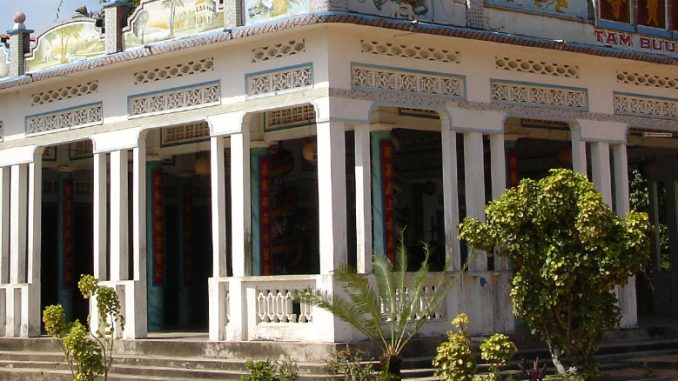
When crafting historical accounts of Buddhism during the Republic of Vietnam, individuals’ lived experiences cast glimmers of insight onto the ways people navigated the contours of our broader narratives. Here, we consider one such story—that of the itinerant healer and Buddhist master, Nguyễn Văn Quảng (ca.1950–present), as he recounts it with the help of his American ghostwriter, Margorie Pivar, in Fourth Uncle in the Mountain: A Memoir of a Barefoot Doctor in Vietnam (2004). In his memoir, Quảng recalls life in southern Vietnam (Nam Bộ) from his early years around Chợ Lách (Bến Tre) and training as a teenager in the Seven Mountains of southern Vietnam’s western delta to his maturation as abbot of a Buddhist Monastery during the final years of the Second Republic of Vietnam (1967–1975), his adjustment to the medical profession under communist rule after 1975, and finally his daring escape from Vietnam in 1987. 1 The arc of Quảng’s story over these four eventful decades of his life offers us localized, personal vantage of what it meant to be “Buddhist” in Southern Vietnam, the experience of living among and traveling the landscapes of the southern delta, and community connections among its peoples. Throughout, Quảng and his coauthor teach us lessons about youth, memory, and loss.
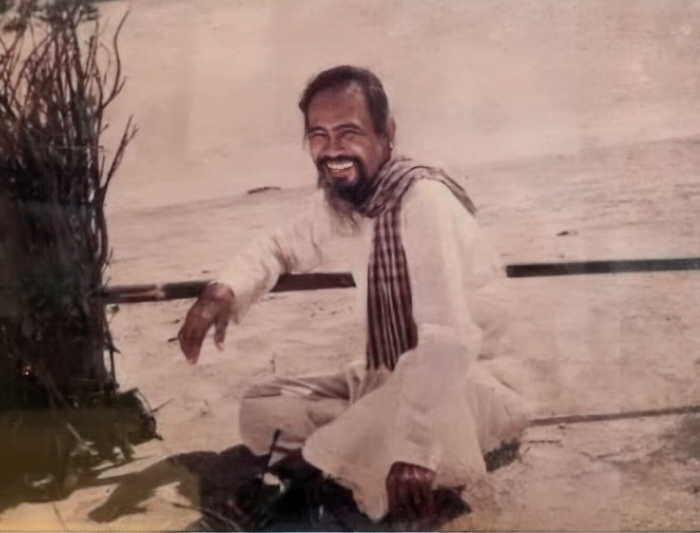
Who is Nguyễn Văn Quảng? Even the venerable doctor is unsure. He was abandoned in a Chợ Lách marketplace as an infant in 1950. His parents, apparently sectarian Buddhists in trouble with the French, were found shot dead not long after Quảng himself was discovered beneath a flagpole. Bereft of his birth parents and perhaps traumatized by this loss, Quảng came to imagine that a “Roe Tree” (cây trứng cá, Muntingia calabura) was his mother, while his adoptive father, a healer monk named Nguyễn Văn Thâu (1886-1983), was “the most powerful sorcerer in Vietnam.” It was Quảng’s fated connection to Thâu that determined his life trajectory. From the age of nine, Quảng left Cái Mơn (Chợ Lách, Bến Tre), where he had been raised by his aunt in Thâu’s stead, to train in the medical and religious vocation of his adoptive father. Quảng thus inherited a venerable religious lineage. Thâu was the son of Nguyễn Văn Kỳ (1842–1946), who, in 1867, traveled to the Seven Mountains to study with the first generation of Buddhists influenced by the millenarian teachings of Đoàn Minh Huyên (1807–1856). As such, Kỳ began his religious training at the same time that the millenarian militant, Venerable Commander (Đức Cố Quản) Trần Văn Thành (?–1973?), initiated the Bảy Thưa Uprising (1867–1873) and Venerable Patriarch Master, Fifth Medium (Đức Bổn sư, Năm Thiếp) Ngô Lợi (1831–1890) had his first visions of the Tứ Ân Hiếu Nghĩa tradition, which he would formally establish in Ba Chúc (Tri Tôn, An Giang) nine years later. Kỳ was among the latter’s founding figures, and he served as ông gánh or leader of one of the sect’s religious communities.
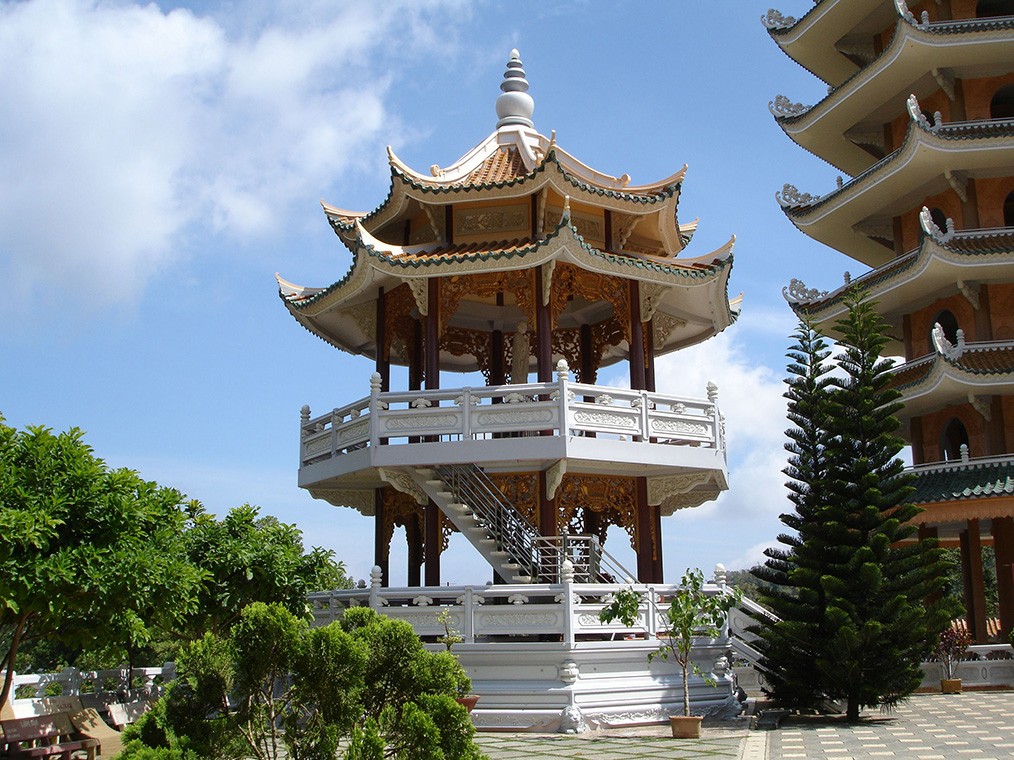
Quảng pursued the first six years of his training in the Chợ Lách area. He stayed briefly with his father in Bến Cát (Định Trung, Bến Tre). However, Thâu proved to be an absentee parent; he was imprisoned by French agents almost immediately after adopting Quảng and, thereafter, his vocation as a traveling healer and authorities’ suspicion of him kept Thâu constantly on the move. Thus, Thâu entrusted much of Quảng’s training to others. Quảng started by learning Chinese, the language of traditional medical formulas and the Buddhist sūtras, with a relative in Chợ Lách and practiced martial arts with an uncle. In 1862, Quảng moved in with a Chinese community in Cái Bè (Tiền Giang), where he lived in a Chinese temple for the Goddess of the Sea (Mazu) and enrolled in a nearby Chinese school. Two years later, Thâu gave Quảng a harsh initiation to Buddhist monasticism by having him tonsured at the newly founded Kỳ Viên Vihāra in Chợ Lách to live with the ascetic monks of the Buddhist Mendicant Sect (Phật giáo Khất sĩ) founded by Minh Đăng Quang (Nguyễn Thành Đạt, 1923–1954?), who had trained as a hermit in the Seven Mountains as well as a Theravada mendicant in Cambodia. 2
In 1965, at the age of fifteen, Quảng began a prolonged period of study in the Seven Mountains. He took up residence at Tam Bủu Temple on Elephant Mountain (núi Tượng, Ba Chúc). At Elephant Mountain, Quảng had numerous formal and informal teachers: a Chinese instructor, acupuncturist, and herbalist as well as a retired martial arts master Ông Chín, an expert of Cambodian talismans and invincibility practices (bùa gồng) nicknamed Tattoo, and a mysterious, impish, sorcerer known as Ông Ba Chì or “Lead Lips.” After the ông gánh of Tam Bửu Temple passed away in 1967, Quảng relocated to An Sơn Temple on the opposite side of Elephant Mountain, where he lived with Ông Năm, who formerly studied alongside Thâu with the temple’s previous master.
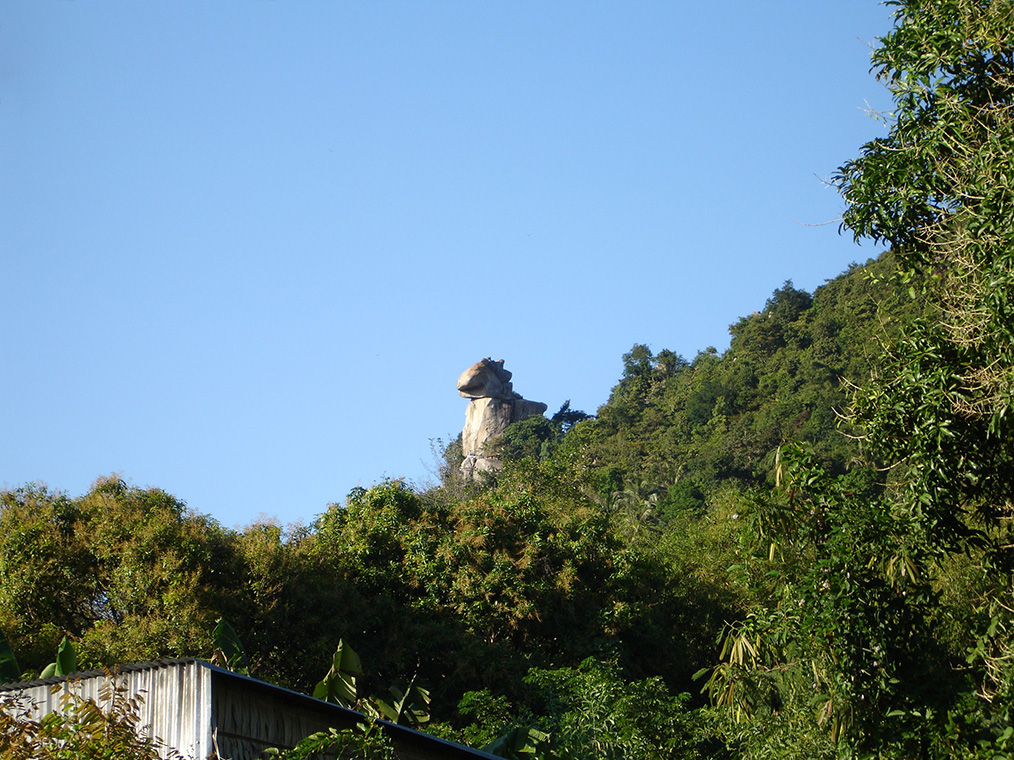
Quảng’s most intensive training took place on Forbidden Mountain (núi Cấm, An Hảo, Tịnh Biên, An Giang). In 1970, Thâu brought Quảng there to meet a cave dwelling hermit whom they addressed as Fourth Uncle. Fourth Uncle instructed Quảng in longevity practices and shamanic travel, especially what appears to be “embryonic breathing,” a kind of masturbatory inner alchemy associated with Complete Perfection Daoism meant to unite yin (female) and yang (male) energies within the body until they conceive a “spirit embryo,” which can mature to travel beyond the physical body. 3 As such, Fourth Uncle was (or still is?) among the sort of practitioners whom Đỗ Thiện described as “Daoists from the mountain.” 4
After three years, Quảng emerged from Forbidden Mountain a Buddhist master. At the age of twenty-four, he became abbot of Quốc Thới Temple (Long Thới, Chợ Lách) near his childhood home, where he presided from 1974 to 1977. There, he witnessed the Communist takeover of the south, an experience made most startling by his discovery that four of his ten disciples turned out to be communist agents. Then, thinking to retreat to the Seven Mountains, Quảng arrived at Ba Chúc to be greeted with further tragedy; the communities dearest to him around Elephant Mountain had been decimated by the Khmer Rouge invasion of 1978. Thereafter, he was folded into a stifling, modernizing medical establishment, at first a clinic in Chợ Lách and then a military camp in Cử Chi, where Quảng was severely injured by a forsaken landmine. But not all was misery in Quảng’s postwar life. In 1981, he met Mai (1961–present), whom he married a year later. Then, in 1985, after his aunt and adoptive father passed away, Quảng made plans to flee Vietnam. He escaped by boat to Thailand in 1987.
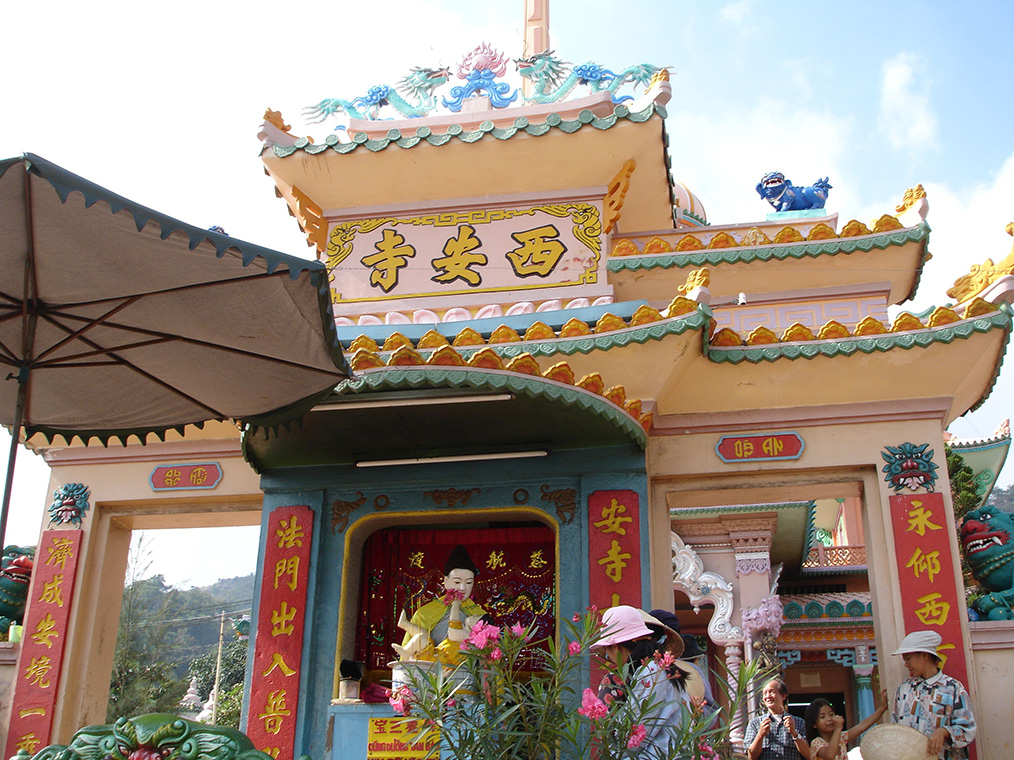
Quảng’s life story teaches us much about what it meant to be “Buddhist” in the Mekong Delta. Although Quảng repeatedly describes Tứ Ân Hiếu Nghĩa as “my religion,” he partook indiscriminately of a range of other traditions, including those of Buddhist mendicants, a Chinese sea goddess, and Daoist hermit as well as talismanic experts, necromancers, and herbal sorcerers without clear affiliation. His teachers certainly had their differences. For example, Ông Năm thought that Fourth Uncle’s teachings were gratuitous and self-indulgent. Nevertheless, overall, Quảng’s experience was non-sectarian, so much so that Quảng could don the monk’s ceremonial yellow robes as abbot of a mainstream temple even under communist auspices. In another instance, when Quảng and Thâu were struck ill by a curse, the master healers sought relief in the services of a female spirit medium. We also see that monks could and were expected to marry, as Quảng fielded several marriage proposals as abbot of Quốc Thới Temple. Finally, for itinerants like Quảng, Buddhism was a mobile tradition that entailed traversing the delta in search of religious attainment while delivering people from illness and suffering.
In addition, Quảng’s story gives us perspective on the peoples of religious communities in South Vietnam. Shawn McHale has documented the ethnic fissures that emerged in the years leading up to Quảng’s birth. 5 However, we see in Quảng’s memoir that these ethnic tensions often evaporated at a local and personal level. Quảng lived among Chinese during his youth, and many in his Elephant Mountain community were ethnic Khmer. Indeed, the first thing one forsakes when “going forth from the home” to become an itinerant monk is one’s identity. This is something Đỗ Thiện observed in his grandfather’s 1938 journey to the Seven Mountains, where he learned from an ethnic Thai fluent in Vietnamese and Khmer magic. 6 Similarly, my own teacher of Seven Mountains Buddhism recalls that he suspected his own itinerant master was Khmer based on appearance, but he could not be certain because of the master’s fluency of several languages.
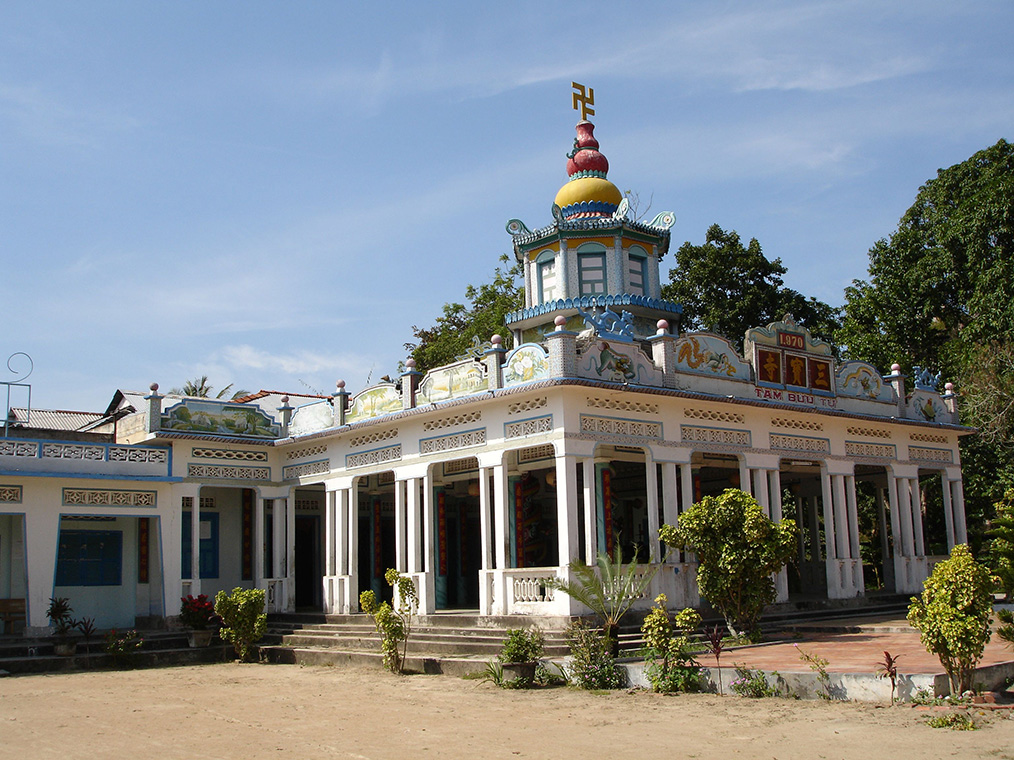
Finally, Fourth Uncle is a lesson in memory. I grew up listening to bygone tales about my grandfather, who like Quảng was an itinerant healer and pilgrim to the Seven Mountains. Among these were seemingly wild stories about his “Blood Artemisia” (huyết ngải), a talismanic herb that could consume whole chickens. It struck me then that Quảng, too, recalled that the jungle hermit “Lead Lips” cultivated such a mysterious plant. As Quảng shows us, for plant doctors and herbal sorcerers alike, the forest’s plants have souls. Indeed, the jungle holds a special place in memories of wartime in Vietnam. Where Quang’s retelling is most poignant is in his juxtaposition of enchanted mountain forests and childhood. In contrast to Bảo Ninh’s haunting “Wilderness that Beckons Souls” (truông Gọi Hồn), 7 the Seven Mountains are, in Quảng’s memory, a childhood playland. As Olga Dror reminds us in Making Two Vietnams (2018), youths are resilient. Childhood is never without wonder and magic. But ultimately, as much as Quảng confesses his desire to retreat into the cavernous womb of the mountain, he is irreparably severed from the past. He witnessed the tragic erasure of his magical world. In perhaps his most understated and devastating recollection, Quảng recounts in one unadorned sentence the unceremonious murder by the Khmer Rouge of both his first love and Grenade, whose bulletproof invincibility magic was thought to make him “the most powerful sorcerer.”
As Quảng left Vietnam by boat, he was visited upon by a bare-chested water nymph, who beckoned him seductively into the depths of stormy waters. Like Bảo Ninh’s protagonist Kiên, who experienced apparitions of Phương, his love, who in the moorland of memory is neither ghost nor girl and Nguyễn Huy Thiệp’s disenchanted character Chương, who swims naked and aimlessly towards the daughter of a river sprite (curiously also named Phương), 8 Quảng confides in us his struggle with dreams, hope, and loss. He teaches us that the magic of youth can never be retrieved, while it still lives on in memory. Through his life story, Quảng vividly conveys the youthful wonder of the Seven Mountains and passes it on to curious minds of future generations.
Quảng Huyền
VinUniversity, Hanoi
Reference
Bảo Ninh. Nỗi buồn chiến tranh. Thành phố Hồ Chí Minh: NXB Trẻ, 2011.
Đỗ, Thiện. “Daoists from the Mountain.” Vietnamese Supernaturalism: Views from the Southern Region, chapter five. London: RoutledgeCurzon, 2003.
Dror, Olga. Making Two Vietnams: War and Youth Identities, 1965-1975. Cambridge: Cambridge University Press, 2018.
Ho Tai, Hue-Tam. Millenarianism and Peasant Politics in Vietnam. Cambridge, MA: Harvard University Press, 1983.
Komjathy, Louis. Cultivating Perfection: Mysticism and Self-Transformation in Early Quanzhen Daoism. Leiden: Brill, 2007.
McHale, Shawn Frederick. The First Vietnam War: Violence, Sovereignty, and the Fracture of the South, 1945–1956. Cambridge: Cambridge University Press, 2021.
Nguyễn Huy Thiệp, “Con gái Thu thần.” In Tuyển tập Nguyễn Huy Thiệp: truyện ngắn, edited by Anh Trúc, 102–148. Hà Nội: NXB Phụ nữ, 2001.
Thích Giác Toàn, ed. Buddhist Mendicancy Tradition of Vietnam. Ho Chi Minh City: Minh Đăng Quang Dharma Institute, 2017.
Notes:
- Today, Nguyễn Văn Quảng lives and practices Vietnamese traditional healing in Brattleboro, Vermont. ↩
- Thích Giác Toàn, ed., Buddhist Mendicancy Tradition of Vietnam (Ho Chi Minh City: Minh Đăng Quang Dharma Institute, 2017). ↩
- Louis Komjathy, Cultivating Perfection: Mysticism and Self-Transformation in Early Quanzhen Daoism (Leiden: Brill, 2007), passim. ↩
- Thiện Đỗ, “Daoists from the Mountain,” chapter five of Vietnamese Supernaturalism: Views from the Southern Region (London: RoutledgeCurzon, 2003), 165–206. ↩
- Shawn Frederick McHale, The First Vietnam War: Violence, Sovereignty, and the Fracture of the South, 1945–1956 (Cambridge: Cambridge University Press, 2021), 94–105. ↩
- Thiện Đỗ, “Daoists from the Mountain,” 180. ↩
- Bảo Ninh, Nỗi buồn chiến tranh (Tp Hồ Chí Minh: NXB Trẻ, 2011). ↩
- Nguyễn Huy Thiệp, “Con gái Thủy thần,” in Tuyển Tập Nguyễn Huy Thiệp: Truyện Ngắn, ed. Anh Trúc. (Hà Nội: NXB Phụ nữ, 2001), 106–108. ↩
